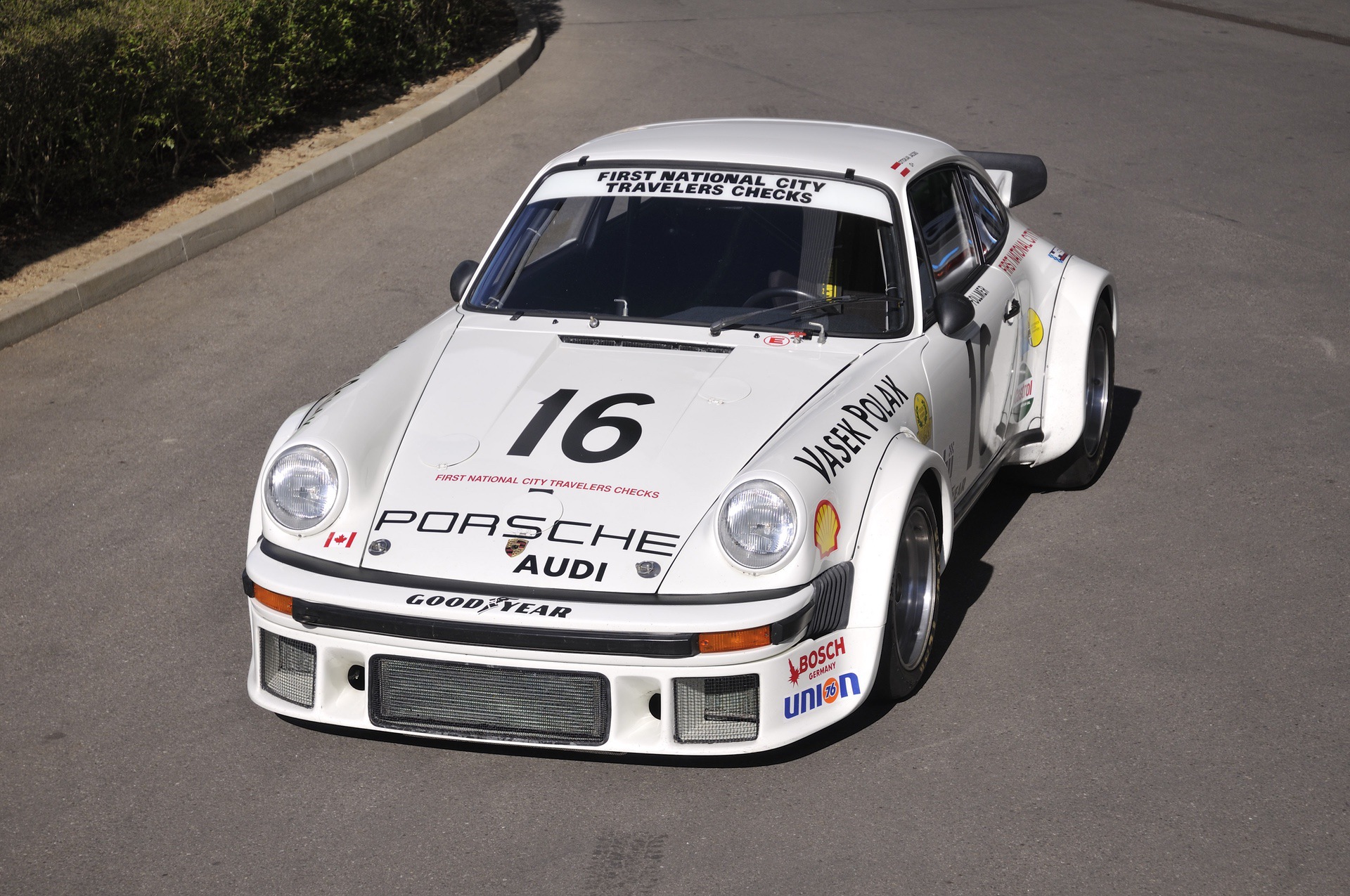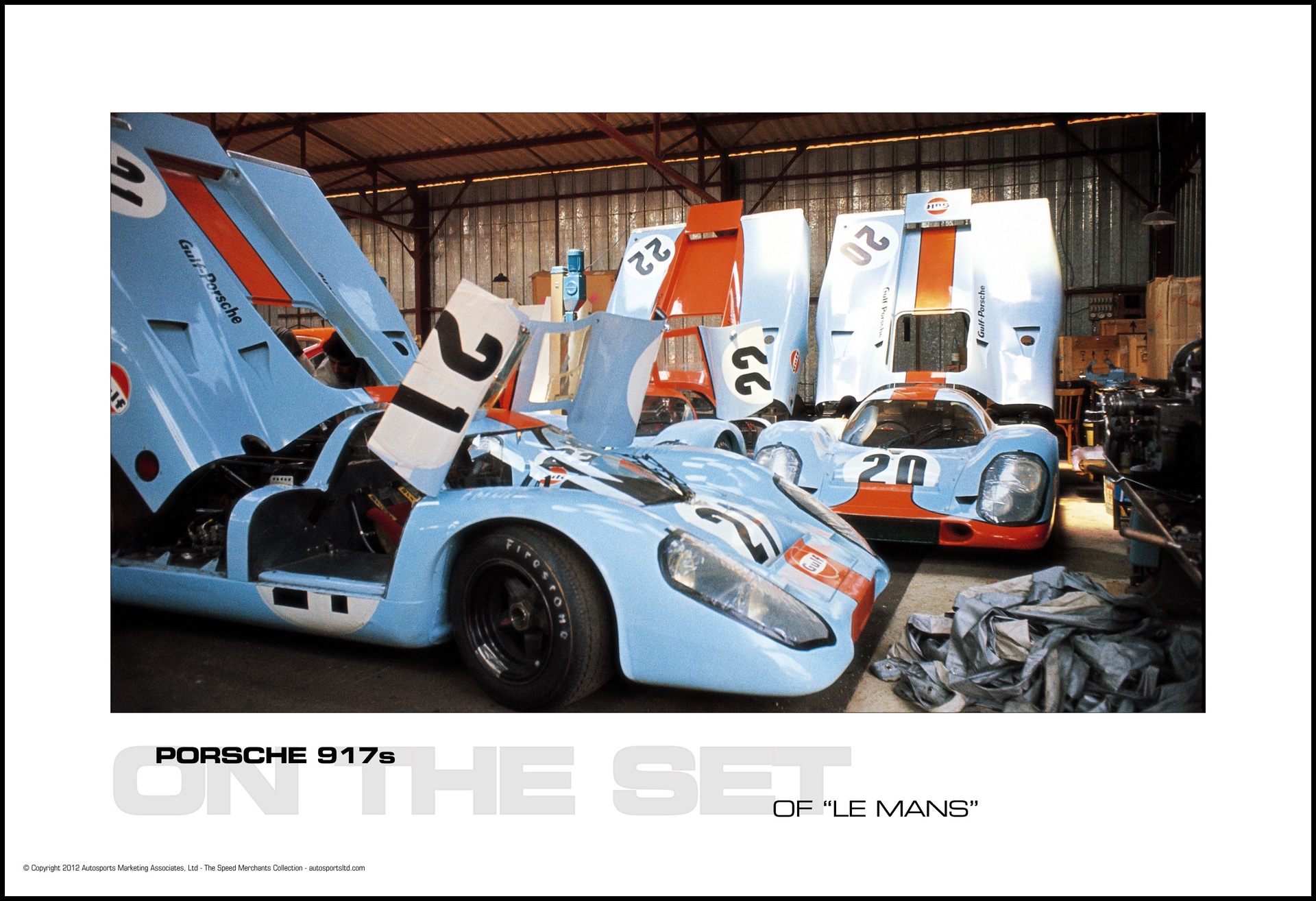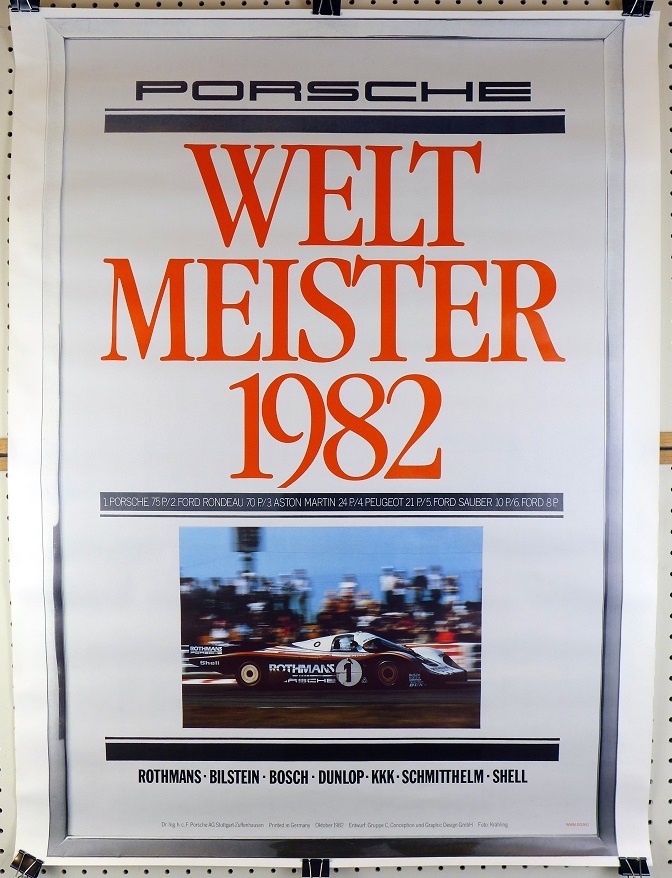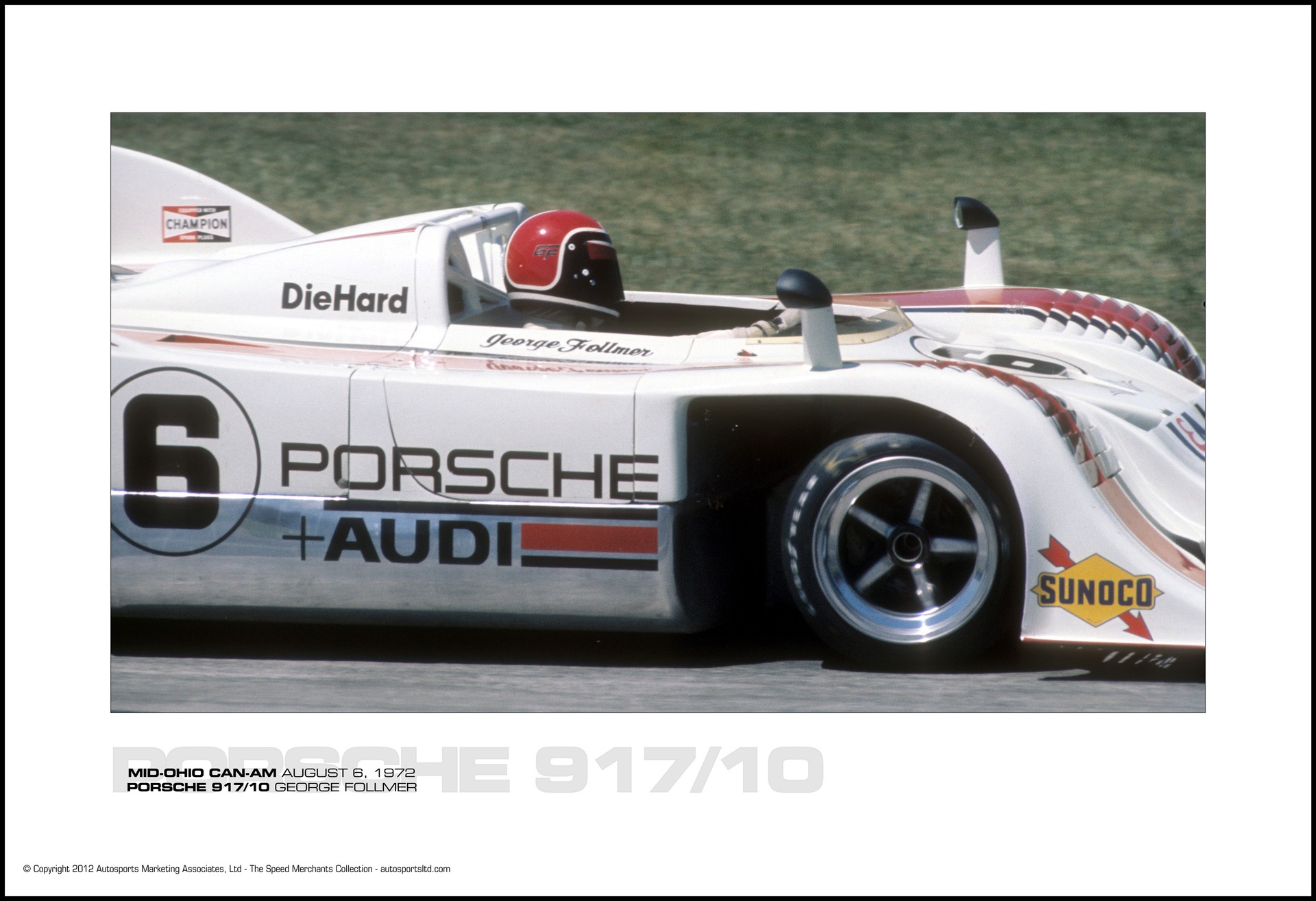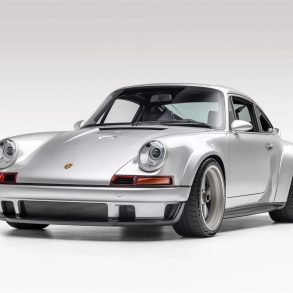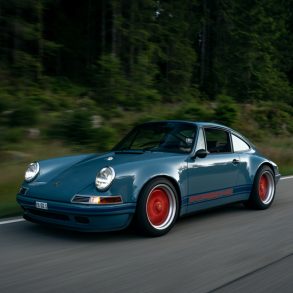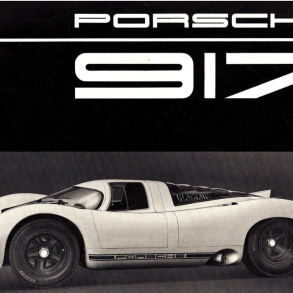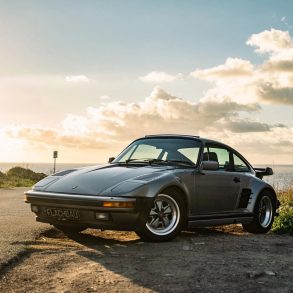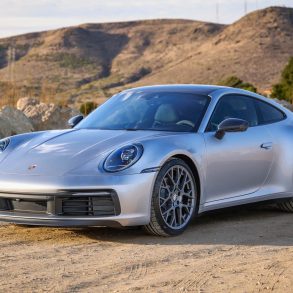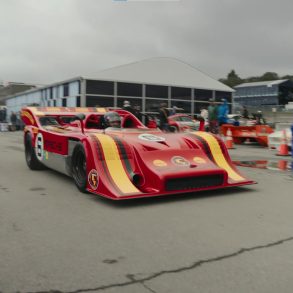There is something about the way that a Porsche looks that is just right. The proportions of the race cars, the balanced look of the 718s, the raw beauty of the 911s. They say that the Italians design with passion, but we think it’s a fairly easy argument that some Germans, especially at a little company out of Stuttgart, are just as passionate about making their cars look like they belong not just on the road, but in an art gallery.
However, pinning a Porsche to a wall in an art gallery would be a challenge in and of itself, so the next best thing, of course, is to put up some posters of our favorite cars. Be honest, StuttCar readers, almost every one of us had a car poster in their bedroom as we were growing up. Some of us had Diablos, some of us had F40s, and many of us had 959s or 911s adorning our walls.
What better way to celebrate our favorite manufacturer and rewind the clock a little than to put up a couple of posters? We’ve gone out there and scoured the internet to find you the best, so you can rest assured that what you’re getting is authentic and high quality, and not someone out to make a quick buck.
Porsche 917s on the Set of Le Mans
If you mention the words “Porsche” and “Le Mans,” two cars come to mind instantly. One is the Porsche 919 Hybrid LMP1 car of recent years that not only won Le Mans three years on the run, but also the FIA WEC constructors title those same three years (2015 to 2017). As amazing as that car is, the other car that comes to mind is famous for its blue and orange Gulf sponsorship livery, as well as launching Porsche to the top step of the podium in 1970 and 1971: the inimitable Porsche 917K.
The 917K was so dominant, so utterly without equal, that when Steve McQueen set out to make his movie about the Great Race, his character drove a 917K. As powerful as it was, with a Type 912 flat-twelve engine, it was the beautiful lines, the form following function that was also just right that made the 917K the legend it became.
Thankfully, McQueen also hired a good set photographer, and out of that, we have this amazing piece that is offered in high quality on heavyweight 17″ x 22″ premium stock.
- Price: $45
- Where To Buy: Autosportsltd.com
Porsche Weltmeister 1982
Many Porsches have played their part to make the marque a revered one. While the cars were fast and beautiful through the 1970s, 1981 saw the announcement of prototype regulations for a newly formed class known as Group C. The goal of the new regulations was to promote engine efficiency amidst the fallout of the late 1970s oil crisis above all else—leaving the design, speed, power, and aerodynamics of the cars up to the manufacturers.
The Stuttgart company saw their opportunity and pounced—designing, testing, and eventually racing the ridiculously fast Porsche 956 Group C. It won pretty much everything it raced in, and even with missing the first round of the World Championship, it was still able to clinch both the drivers and constructors championship for 1982.
What makes this poster special is that it is original, and there are several available through Vintage Auto Posters. They are backed by archive-grade linen, and are genuine originals printed by Porsche for the German market only in 1983.
- Price: $115
- Where To Buy: VintageAutoPosters.com
Porsche 911 Carrera RS 1973 Glacier Blue Limited Series
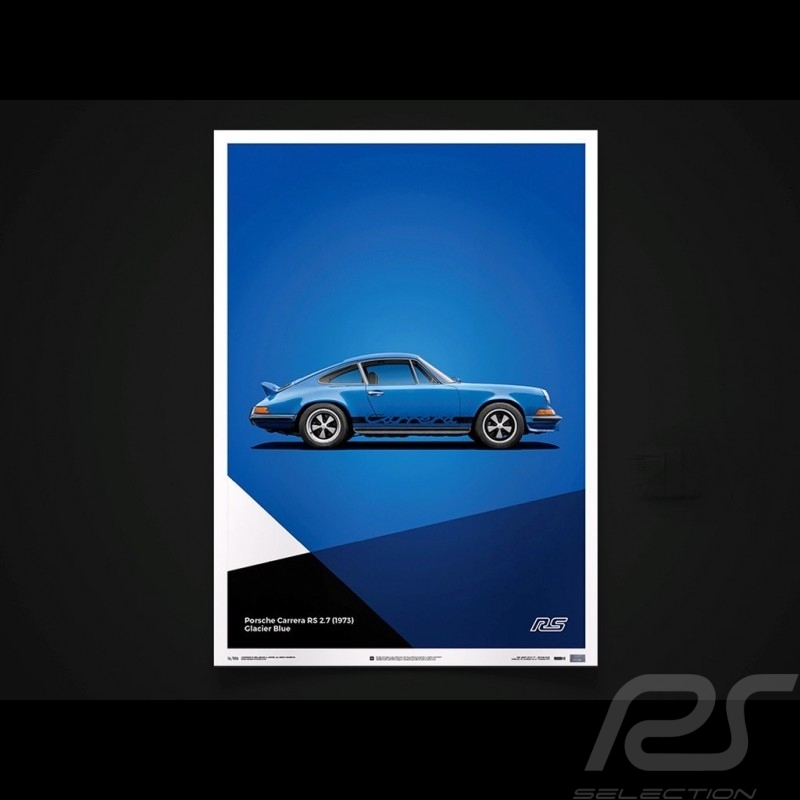
There have been legendary Porsches. There have been exceptional Porsches. There have only, however, been a very select few revolutionary Porsches, the cars that redefined what Stuttgart could produce. These are the cars that not only changed the playing field; they were the reason it blew up in the first place. The 918 Spyder redefined what a performance hybrid hypercar could do. The Porsche 959 was a technological powerhouse, redefining what a car could (and should) be able to do.
Then there is the 1973 911 Carrera RS 2.7. This is the car that defined what a homologation special should be. It had a bigger engine, racing suspension, the same body shape as the race car, and could reach a top speed of 153 MPH, making it the fastest road-going Porsche at the time. It was raw, but as with many Porsche 911s, also eminently driveable and comfortable. This is truly a homologation special worthy of being on your walls. This particular series by Selection RS is limited to only 911 pieces, measures 20 x 27 inches, and is printed on super-heavyweight stock.
- Price: $64
- Where To Buy: SelectionRS.com
Porsche 911 RSR IMSA—Milt Minter Daytona 1974
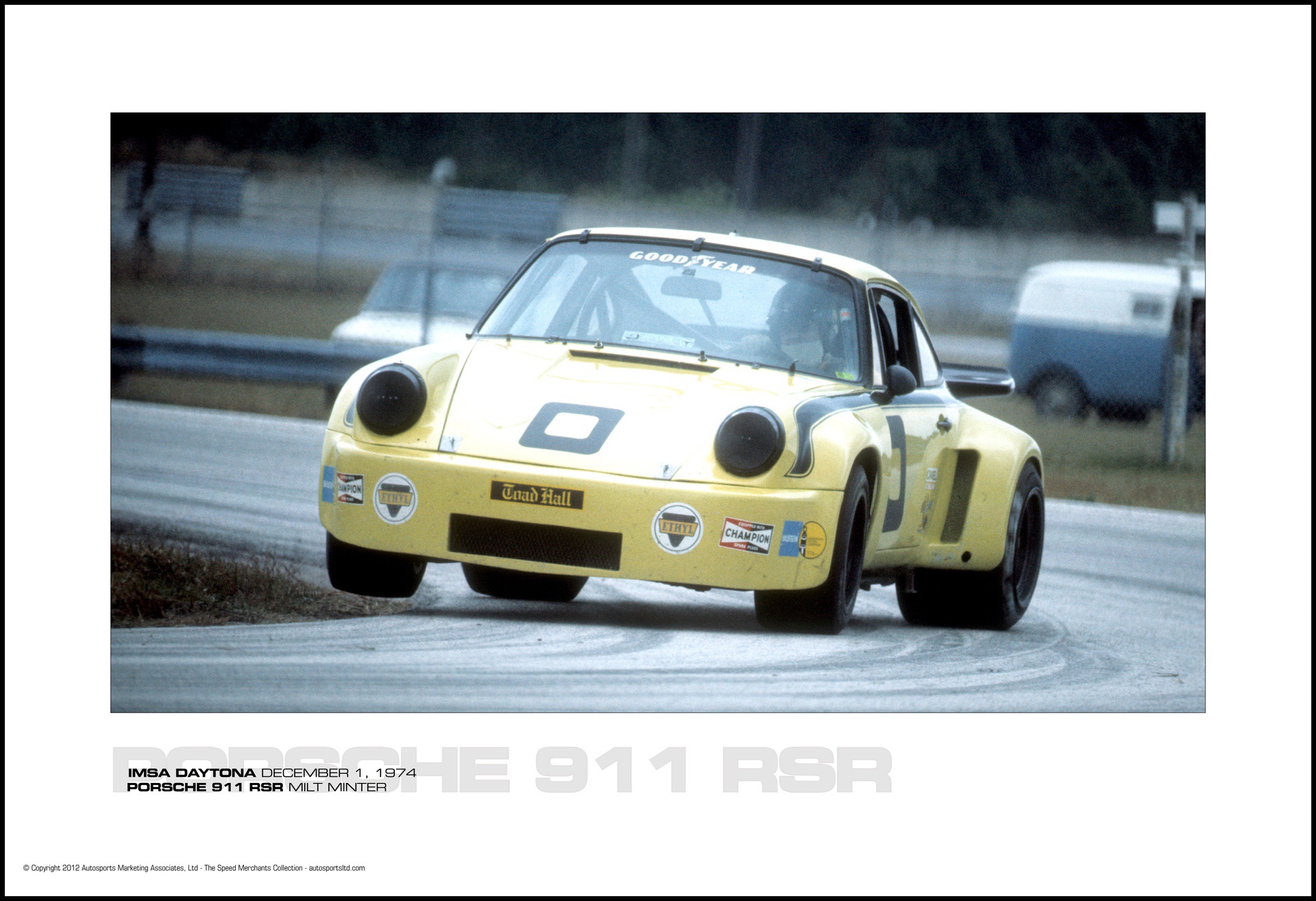
Throughout the racing history of the 911, there have been some spectacular cars. One of these is the 1973/1974 Porsche 911 RSR 2.8, a widebody 911 with a 2.8 flat-six churning out nearly 300 HP. The RSR is also the entire reason that the RS series of race and road cars came to be, as a factory built 911 race car that captured the attention of the Stuttgart faithful. In fact, the RSR stands for “RennSport Rennen,” literally translated as “Racing Sports Car.”
The biggest thing about the original 911 RSR is that it met not only German and European GT rules and regulations but also fit neatly into the International Motor Sports Association (IMSA) regulations. Many privateers jumped at the chance to buy and race a dedicated Porsche racing 911, and among them was the American legend Milt Minter.
In 1973, Porsche awarded Minter the Pedro Rodriguez Award for being the fiercest, most aggressive driver of a Porsche car, and this poster, with the front right cocked in the air, the tail starting to slide out, and some opposite lock on just epitomizes how the man raced.
- Price: $25
- Where To Buy: Autosportsltd.com
Porsche 935 K4—Sebring 1984
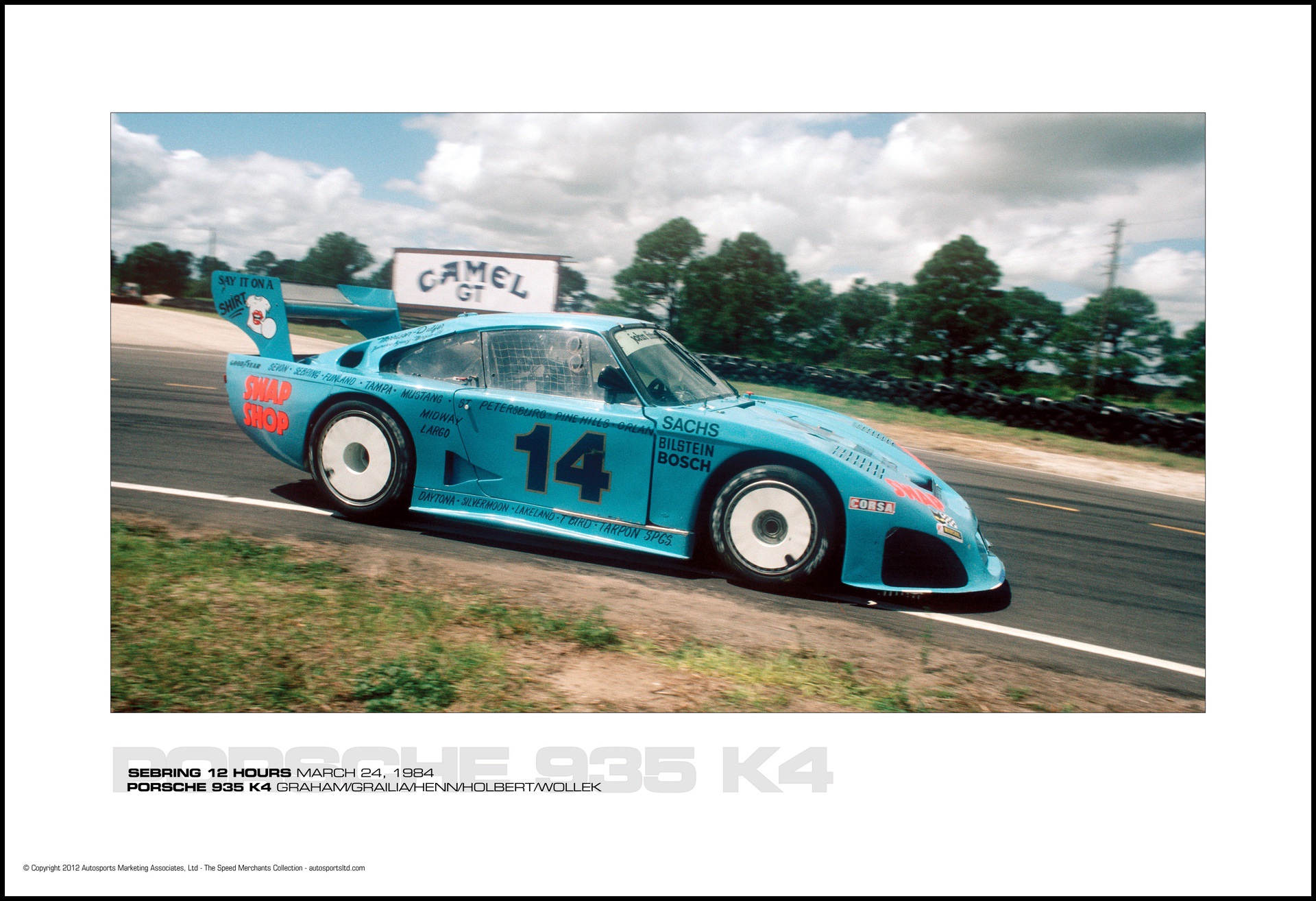
While the world was paying attention to international endurance racing and the dominant Porsche 956 and 962 Group C cars, that did not mean that the previous generation series 935 race cars were completely abandoned. Indeed, Porsche had continued to develop the car beyond the 935/78 Moby Dick, but were hesitant to release these “Evolution” cars to customer racing teams.
That didn’t stop Kremer Racing of Cologne, Germany, from asking for a copy of the plans for the 935/78—and, based off of it, they built their own series of 935s. The rarest of these is the 935 K4, of which only two were built, and only one raced from 1981 to 1984. Its last race, before regulation changes in international GT racing changed, was at the Sebring 12 Hours in 1984, where it placed 6th overall. This poster is of that very car, at that very race—the closing of a storied chapter of Porsche racing and the 935 series.
- Price: $45
- Where To Buy: Autosportsltd.com
Porsche 917/10—George Follmer, Mid-Ohio Can-Am 1972
Via Autosports Marketing Associates Ltd
For those unaware of just what Can-Am racing was, it was insane. Taking place in Canada and (the United States of) America, hence the name Can-Am, it was the top tier prototype racing series of choice from 1966 to 1987. It was insane for the reason that the cars that raced it in were barely controllable. They were lightweight monsters with turbocharged engines capable of over 800 HP—in the 1970s!
One of the most famous, and infamously difficult to drive, cars of the Can-Am series was the Porsche 917/10. The biggest part of that difficulty was that it did use a flat-12 like its Le Mans cousin, but had two of the largest turbochargers ever seen in competition before (and since!) bolted to it. These turbos needed a lot of exhaust pressure to spool up, so while the 917/10 had an 8,000 RPM redline, the turbos would not be producing compressed air until 5,000 RPM, and all of a sudden the drivers such as George Follmer had to deal with nearly 900 lbs-ft of torque and 850 HP in a car that wanted to swap ends every time the throttle was even looked at.
The thing about the 917/10 is that despite having 850 HP, it was not the most powerful Can-Am car. That honor goes to the 917/30 Spyder, also known as “The Car That Killed Can-Am.” It would take 12 years after the 917/30 raced, but Can-Am, after losing participants and sponsors over the years, finally ended in 1987.
- Price: $25
Where To Buy: Autosportsltd.com


